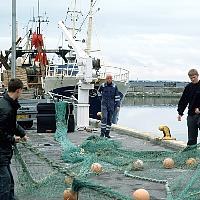(LUXEMBOURG) – The EU Council agreed Monday on next year’s total allowable catches (TACs) and national quotas for the ten commercially most important fish stocks in the Baltic Sea.
Following day-long talks, ministers agreed on the maximum quantity of fish that EU fishermen will be allowed to catch next year out of the ten main commercial stocks in the Baltic Sea, a quantity also referred to as the “Total Allowable Catch” (TAC).
“Setting fishing opportunities is a squaring the circle exercise,” said Estonia’s Environment Minister Siim Kiisler, for the EU presidency: “We have done it in full respect of the Common fisheries policy objectives, the Baltic plan provisions and scientific advice. In the final agreement economic and environmental sustainability go hand in hand.”
In line with the Commission proposal based on ICES scientific advice, the agreement includes a roll-over for Western cod and an increase in catches for central herring (+20%) and sprat (+1%). For the remaining stocks, ministers decided on a reduction for Riga herring (-7%), salmon in the Gulf of Finland (-5%), main baisin salmon (-5%), Eastern cod (-8%), Bothnian herring (-40%), Western herring (-39%) and plaice (-10%).
The agreed quantities take into account the commitment to the objectives of the Common Fisheries Policy (CFP), including the achievement of maximum sustainable yield (MSY), the principles of the multiannual management plan for the Baltic sea, and scientific advice, in particular advice provided by the International Council for the Exploration of the Sea (ICES).
In addition to setting TACs and national quotas on some species, the Council confirmed the extension to 2018 of those management measures currently in place to improve the state of the stock Baltic cod (bag limitations in recreational fisheries and closure periods, with derogations for small coastal fisheries).
Ministers also decided to postpone discussions on measures on marine eel fisheries to a later stage to discuss a pan-European strategy to ensure the protection and sustainable use of the stock.



